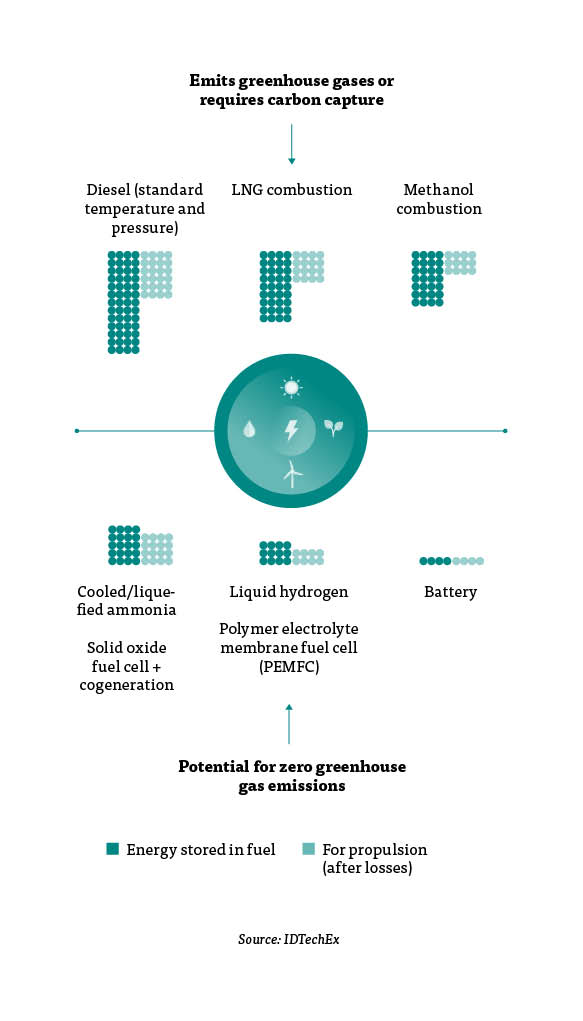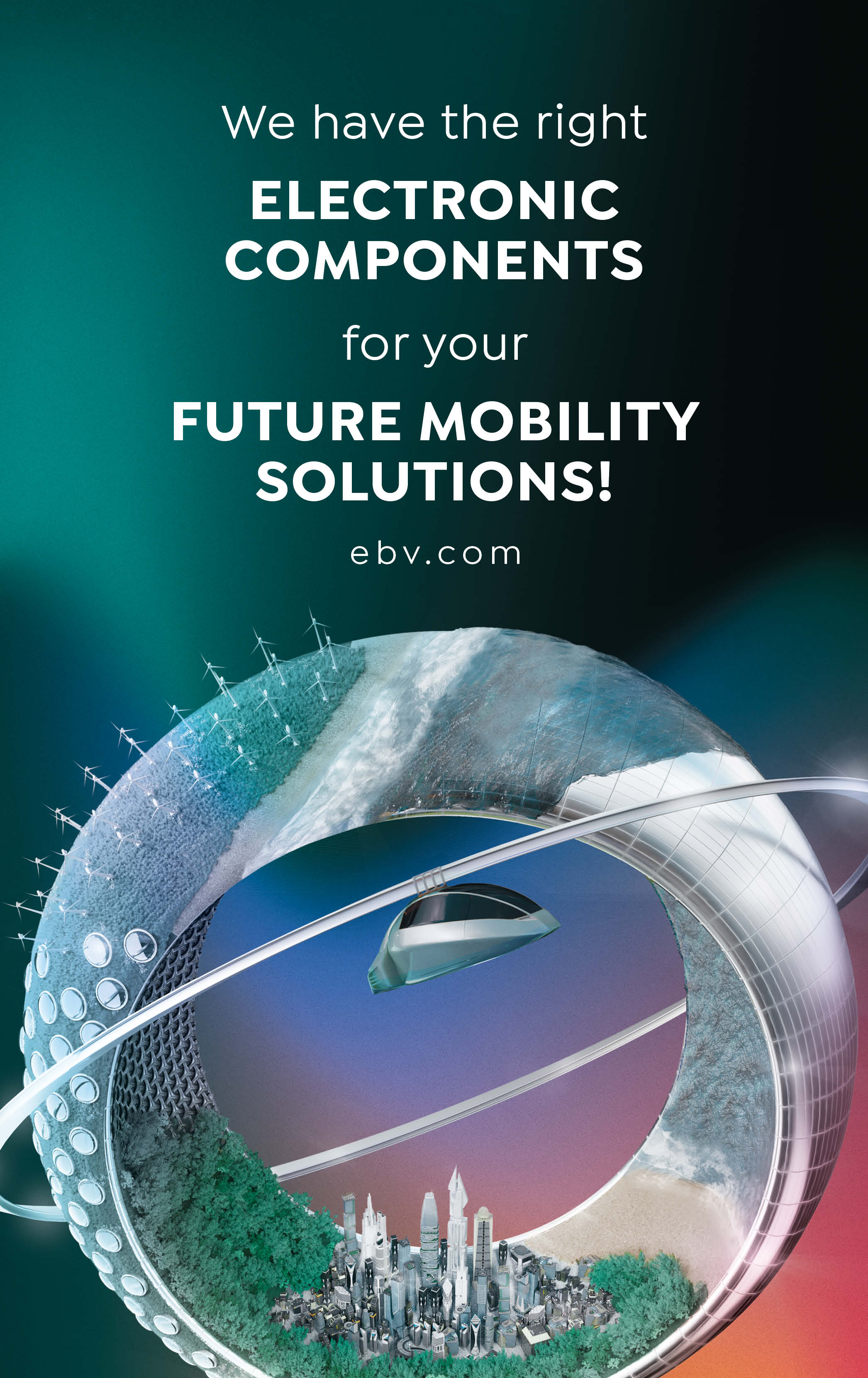Alongside battery-electric drives, hydrogen is also set to play an important role in the decarbonisation of the transport sector. Fuel cells in particular, however, still require a lot of development work in order to make them feasible for mass production.
Battery-electric drives are a firm focal point in the discussion of how to decarbonise the mobility sector. Meanwhile, intensive research is also being carried out on technologies in which hydrogen is the energy source. Hydrogen is easy to store and transport, which makes it directly suitable as a fuel for the mobility sector. EU member states, in particular, want to use green hydrogen (hydrogen produced using renewable energy) to reduce CO2 emissions in different transport sectors: in Germany, the focus is on trucks, buses and aircraft, and France is working on pilot projects for the sea and aviation sector.
High energy density benefit
The slight disadvantage of hydrogen is that there are high energy losses in its production, meaning that hydrogen consumes significantly more primary energy than directly electrical solutions: for example, a car with a hydrogen drive requires twice as much green energy as an electric car with a battery. However, fuel cell systems have a superior energy density compared to today’s Li-ion battery systems, so a vehicle with a fuel cell system can achieve a much greater range at a comparable system weight. “The fact that hydrogen will play a key role as an energy source of the future is now beyond dispute, both for industry and for road traffic,” says Professor Michael Günthner from TU Kaiserslautern. “The first commercial vehicles with hydrogen drives that use either a fuel cell or a hydrogen engine have already been planned for the near future.”
High output in a combustion engine
A hydrogen engine has the ability to convert hydrogen energy into mechanical energy with an excellent efficiency. Its other advantages include durability and a high service life, as well as the ability to be operated continuously in extreme conditions, such as cold weather, heat and vibration loads. The technology is also not significantly different to that of conventional combustion engines, so there is plenty of existing knowledge around engine construction that can be leveraged.
For example, in spring 2022, the company Keyou presented prototypes of an 18-tonne truck and a 12-metre city bus with a hydrogen engine that was based on an existing diesel engine platform. This means that the technology can be applied to the existing market. “This is where we see the greatest potential for the hydrogen engine or vehicles with a hydrogen engine,” says Thomas Korn, CEO and founding member of Keyou.
The technology is not only durable, robust and does not rely on the use of rare metals, but also offers end customers a cost structure that is equivalent to that of a diesel engine vehicle, especially in terms of total costs. Last but not least, hydrogen engines require only very slight modifications to the underlying base engine, and existing combustion engine infrastructure can be leveraged in the production of hydrogen engines and vehicles. For this reason, hydrogen engines are already being offered by several manufacturers, and they are generally seen as a solution that complements fuel cell drives – especially for applications that involve high loads.
~600 mega-tonnes per year – the amount that the global demand for hydrogen is expected to increase to by 2050.
Source: PwC
Fuel cells for the mass market
For lower, consistent loads, the fuel cell is the more efficient option. In a fuel cell, electrical energy is produced through a chemical reaction between hydrogen and oxygen. This electrical energy is then used to power the drive of an electric motor. No emissions or noise are generated in the process. Fuel cell technology can be used in cars and trucks as well as in trains, ships and aeroplanes.
However, the manufacturing of fuel cell stacks is a highly complex process. A single stack can consist of more than 3,000 individual parts and have several hundred layers. For this reason, current development projects are focusing on trying to minimise the required installation space, reduce manufacturing costs and increase the service life. “In order to successfully bring fuel cell technology to market in mass scale, it requires a combination of extensive experience in research and development, systems integration and complex manufacturing process,” says Mike Mansuetti, President of Bosch in North America. The company recently announced that it would be investing more than 1 billion US dollars globally into the development of mobile fuel cell technologies up to 2024.
Hydrogen is not a panacea
In their research project “Hydrogen as a panacea?”, researchers from the Borderstep Institute for Innovation and Sustainability and from the Institute for Ecological Economic Research (IÖW) are warning people not to get false hopes. “Although green hydrogen will be an indispensable building block in the energy system of the future, its production requires a huge amount of green energy. It will therefore still be a while before it will be available in larger quantities,” explains Jens Clausen from the Borderstep Institute. Florian Kern from the IÖW adds: “In steel manufacturing, for long-term energy storage and as a raw material for refineries and the chemical industry, hydrogen is essential for achieving climate change objectives based on today’s state of the art. In other areas, more energy-efficient and cost-efficient solutions should be used.” Researchers do not consider hydrogen a sensible option for trucks, buses and for goods transport.
80.48 billion US dollars – the value of the global market for hydrogen fuel cells in 2030. In 2021, it was just 14.72 billion US dollars.
Source: ResearchAndMarket
Price of hydrogen expected to decrease
According to PwC, the production price for green hydrogen worldwide is currently between 3.3 and 7.3 US dollars per kilogramme. However, analysts are assuming that the price will reduce considerably by 2030, down to 2-6 US dollars per kilogramme. The reason for this is that the costs for electrical energy from renewable energies will decrease and hydrogen technologies will become more and more sophisticated.




